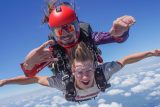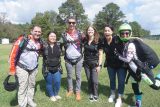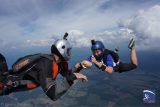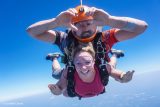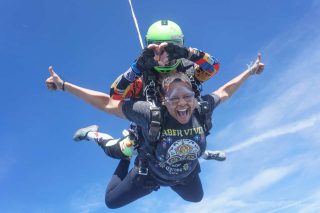How to Become a Skydiving Instructor
Skydiving
3 years ago
Breaking Down the Steps to Becoming a Skydiving Instructor
Becoming a skydiving instructor is certainly not a traditional occupational choice, but it is a form of employment that is as fulfilling as it is fun. Because the role of skydiving instructor is far from a typical job, the career path to becoming a skydiving instructor can be quite obscure. Likewise, those interested in working within the industry are often unsure about where to start and exactly how to become a skydiving instructor.
Do you think working as a skydiving instructor is up your alley? Here’s the step-by-step for how to become a skydiving instructor.
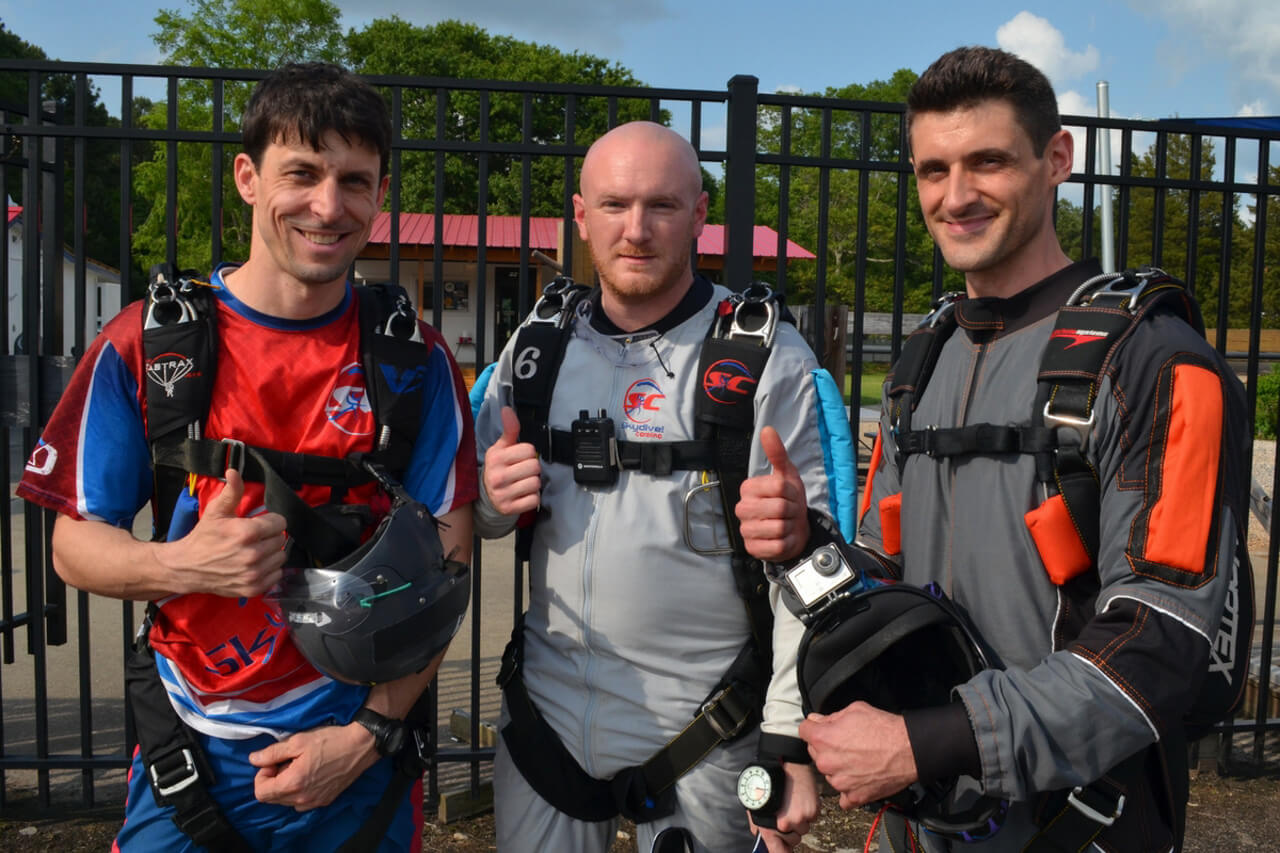
How To Become A Skydiving Instructor
Step One: Start Skydiving
Becoming a skydiving instructor requires that you…well…skydive! So, naturally, the first step on the skydiving instructor career path is to make a tandem skydive. After the initial experience, you can usually tell if this incredible world is one you want to delve into more deeply.

Step Two: Earn Your Skydiving License
Next, you will need to earn your USPA (United States Parachute Association) skydiving license. The skydiving A License is an introductory license that enables you to skydive solo. To earn this license, you’ll go through a program known as Accelerated Free Fall. After you have achieved your A license, you’ll move on to step three for how to become a skydiving instructor.
Step Three: Gain Experience & Work Your Way Up
After earning your A license, you will be cleared to skydive with other licensed jumpers, but trust us, you still have much to learn. Try not to rush the process and have fun! Jump as often as you can and focus on developing both body flight skills and canopy flight skills.
Before you can run, you’ve got to walk, and you’ll need to accrue at least 100 skydives to begin your skydiving instructor journey.
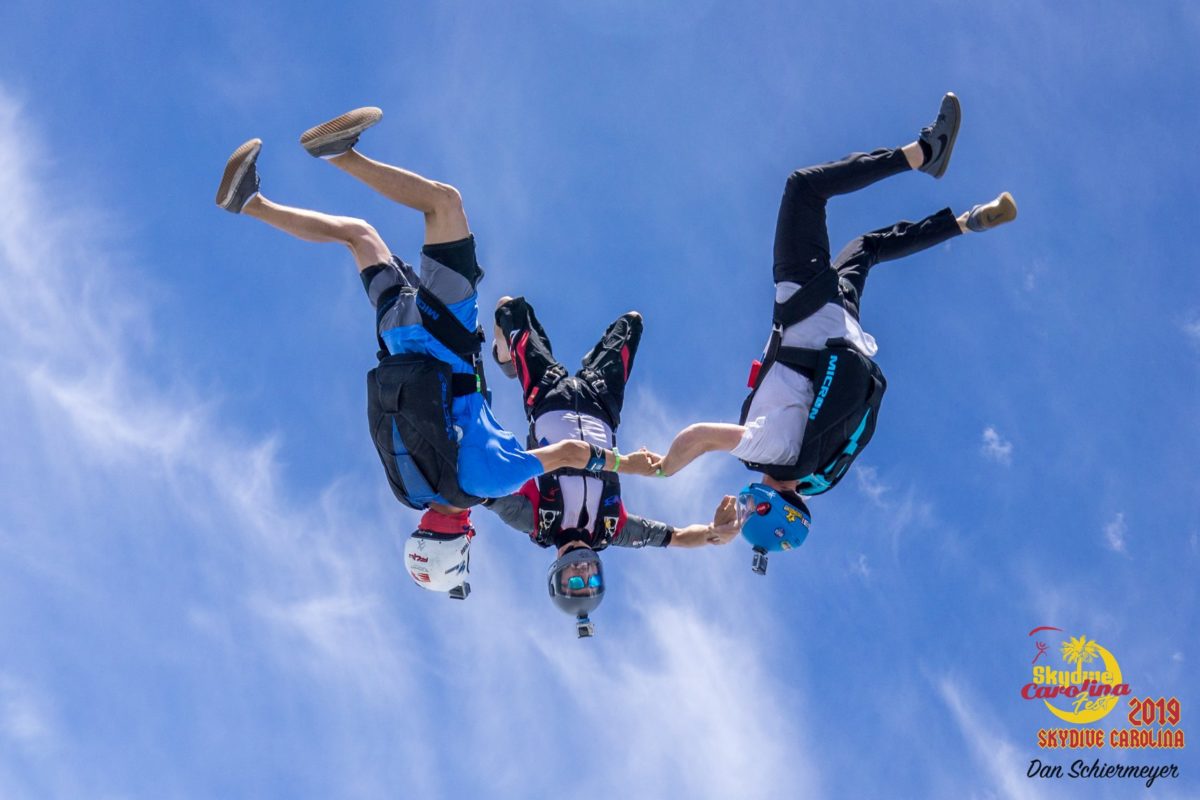
Different Types of Skydiving Instructor
There are a few different types of skydiving instructors and each type has specific prerequisite requirements. Below you can read about the different types of skydiving instructors and learn more about what is required for each skydiving instructor rating.
Skydiving Coach Rating
The Coach Rating is the first instructional skydiving rating that an individual can receive, and it is also a foundational rating required in order to attain other instructional ratings down the road. The skydiving coach can teach the general (or non-method specific) portions of the Accelerated Free Fall first jump course, and they may also train and jump with skydiving students as they build their group skydiving skills. Coaches work closely with and under the supervision of Accelerated Free Fall Instructors.
In order to qualify for the Coach Rating, an individual must be 18 years of age, have a minimum of 100 jumps, and have earned a USPA B license. To earn the skydiving Coach Rating, an individual must successfully complete the Coach Certification Course.
Accelerated Free Fall (AFF) Skydiving Instructor
An Accelerated Free Fall skydiving instructor is responsible for teaching AFF students how to skydive and assisting those students as they learn new maneuvers in the sky from their first jump through the completion of their USPA A license.
In addition to freefall skills, AFF skydiving instructors are also required to instruct Accelerated Free Fall students on topics such as canopy flight, gear and equipment, spotting and aircraft knowledge, emergency procedures and rules and regulations from the Skydiver Information Manual. Because AFF students are dependent upon their skydiving instructor, the role of AFF instructor holds a great deal of responsibility.
In order to qualify to become an AFF skydiving instructor, an individual must be 18 years of age, have held a USPA Coach or other Instructor rating for at least one full year, or have accrued a minimum of 500 jumps. The candidate must also have earned a USPA C license and logged 6 hours of freefall time.
In order to earn the AFF skydiving instructor rating, the individual must pass a USPA Accelerated Free Fall skydiving instructor course by successfully proving their abilities with a written exam and passing practical evaluation jumps with a USPA AFF examiner.
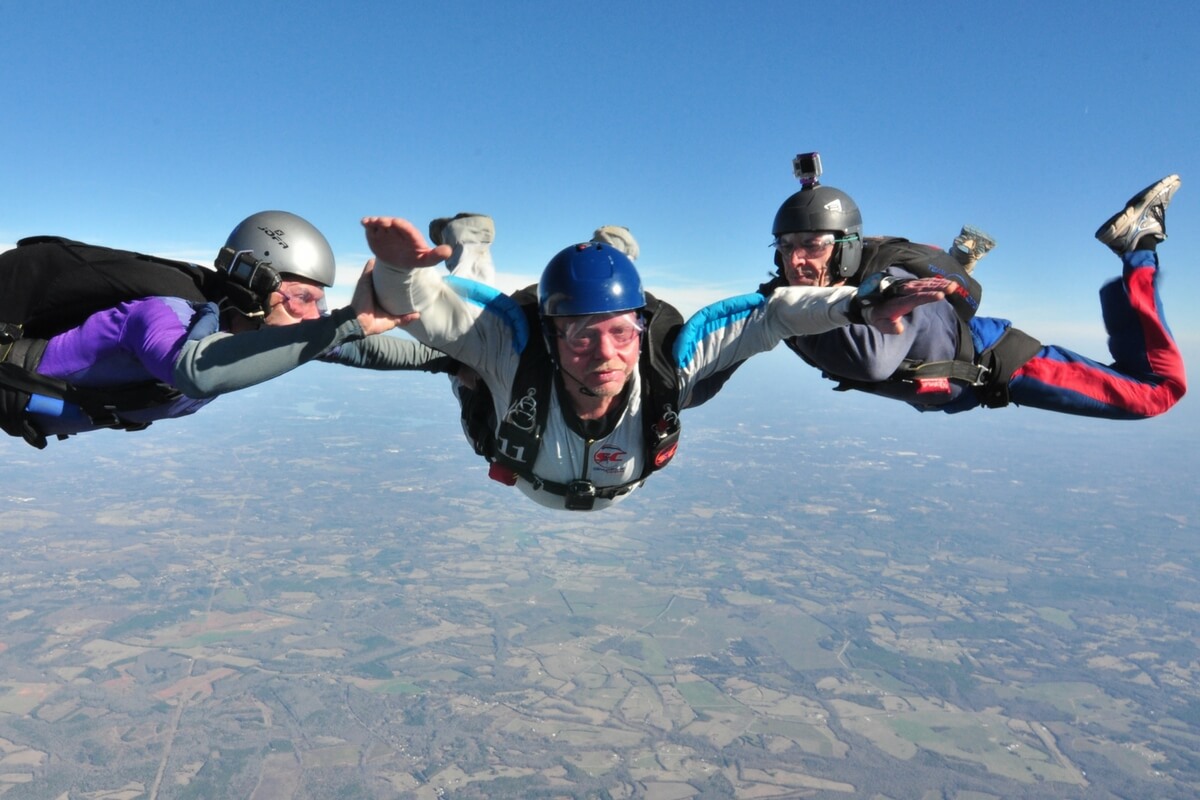
Tandem Skydiving Instructor
Tandem skydiving is the most common way to introduce people to the sport of skydiving. On a tandem skydive, the student is attached via a harness to the skydiving instructor, who takes on the majority of the responsibilities – particularly during the canopy descent and on landing.
In order to qualify to become a tandem skydiving instructor, an individual must be 18 years of age, have held a USPA instructional rating, logged 500 skydives, earned a USPA D license, attained a minimum of three years experience in skydiving, and possess a current FAA Class III Flight Medical Certificate.
To earn the tandem skydiving instructor rating, the candidate is required to successfully complete a USPA Tandem Instructor Rating Course, which includes both a written exam and practical jumps with a simulated student in the presence of a USPA Tandem Instructor or a USPA Tandem Instructor Examiner. Additionally, the tandem skydiving instructor must also receive manufacturer-specific equipment training.
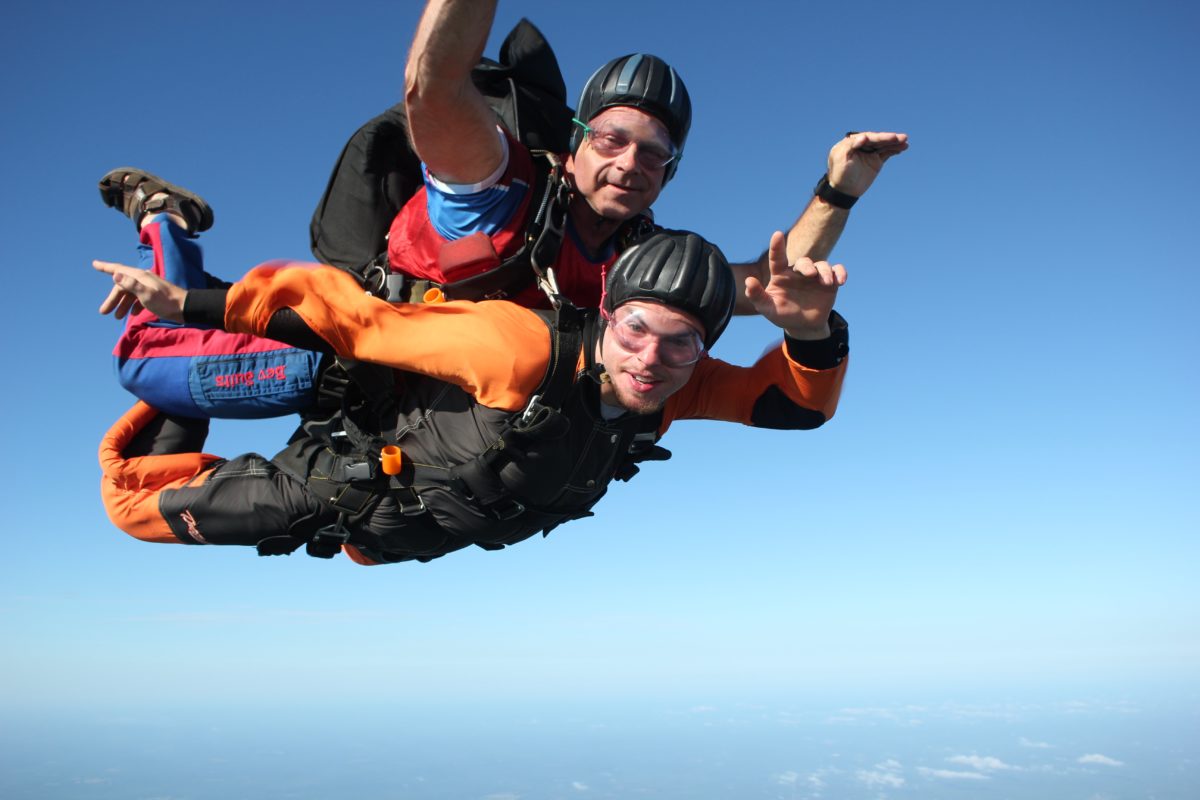
How Much Do Skydiving Instructors Make?
The amount that a skydiving instructor is paid will depend on the type of rating they have and will vary from facility to facility. Typically, a skydiving instructor is paid per jump. At Skydive Carolina, we believe that the caliber of instructors we employ should be paid accordingly, and our skydiving instructors are paid more than the current industry standard.
Every grand journey starts with one small step. Ready to get on the road to becoming a skydiving instructor? Schedule your first jump today!
